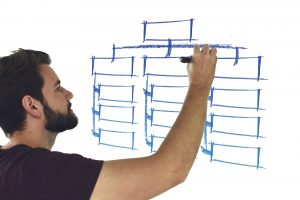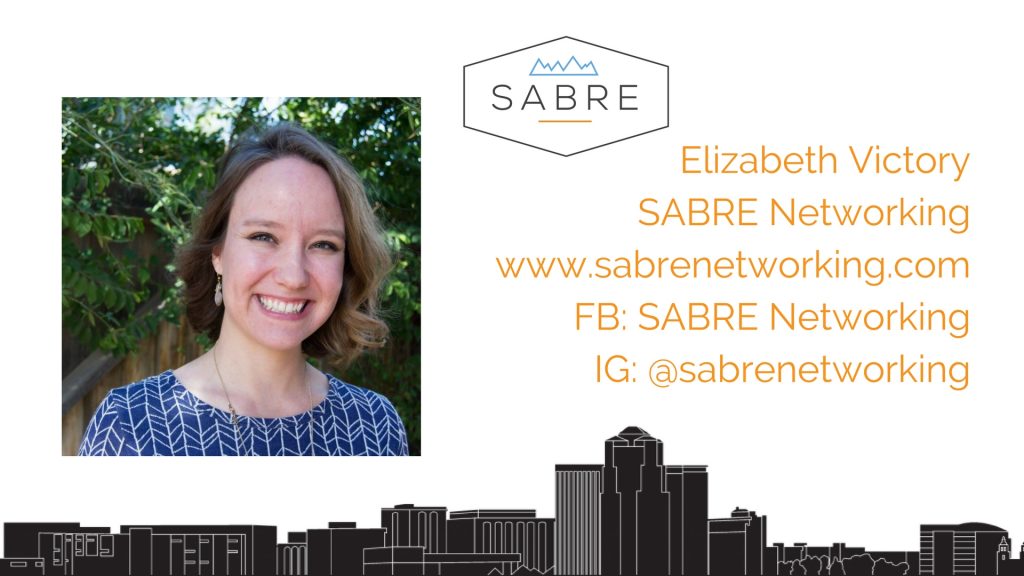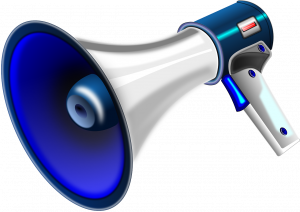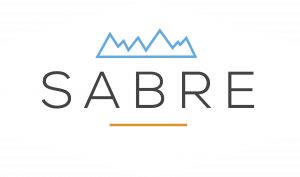The Complete Guide To Giving A Networking Presentation

Ah yes. The classic business networking presentation. If you are in the business sphere at all, at some time or another you will have the floor to give a presentation. If you incorporate business networking in your marketing, then, you’ll likely have an opportunity to do a business networking presentation.
But what exactly IS that?
A networking presentation isn’t a sale pitch, or a TEDtalk (although those rock). It is a special blend of who you are, why you do what you do, and what people need to know in order to send you quality business.
While it’s pretty standard to have this kind of opportunity if you are part of a networking group, it can be a challenge to make the most of this time. Even if you are veteran networking beast and have done these types of presentations before – you will find that the networking game have changed immensely in the last few years. So how to do give a networking presentation that benefits both you and your fellow networkers?
After years of networking, building my own businesses, and leading networking groups I have seen it all – the good, the bad, the ugly.
I’ve laughed, I’ve cried, I’ve cringed.
I’ve been bored, felt insulted, been inspired. I’ve done presentations and witnessed countless more. 5 minutes long, 10 minutes, 15, 20… big business, small businesses, it doesn’t really matter – there are some ket things that set about a decent networking presentation from one that smashes it out of the park. And that’s really what we are all going for – to take our businesses to the next level. We’re all on the same team, we all have the same goals.
So are you ready to dive in? Grab a cup of coffee and a notepad (or tablet, or voice memo, or however you record your muse) and let’s unpack how to give the ultimate networking presentation!

First things first, we have to lay some ground rules when it comes to networking presentations. The most important thing you need to get straight is your perspective- where you are coming from, how you are approaching your presentation.
Traditionally, a business prevention is coming from a sales perspective – selling an item, service, or even an idea.
A networking presentation, however, breaks out of that mold and focuses on the opposite. The goal is not to sell a service or product or even an idea.
Your goal is to sell YOU.
If you go in with a traditional sales mindset, then you are already setting yourself up for failure. Why?
The people listening to your networking presentation are not your customers!
In a business networking group, your goal is to build trusting relationships that lead to referrals and strategic partnerships. It’s not about selling… at least, not directly. Sales are the fruit of time spent sowing and cultivating relationships. That perspective is what lead to productive networking, a solid 30/60/90 second marketing message, and is the key to a successful networking presentation as well.
Now that we have our focus right, we can get into the nitty gritty of planning out a presentation!
Step 1: Determine your goals.

Your networking presentation should have two goals:
- to tell who you are
- to tell how we (the people in the room) can send you business.
Sound simple, right? Don’t scroll to the end of this blog so fast, because it’s actually harder than it seems to share these two things well.
If you only share who you are, then all you succeeded in doing was talking about yourself for ten minutes straight. If you only talk about how we can help you, then we don’t have anything to base our trust on.
Why should we trust you? Why should we go out of our way to do the things you are asking us to do? Why should we refer someone to you instead of someone else in the same industry?
People have to know who you are.

To get started with your planning, ask yourself:
Who am I? How can the people in this room best send me business?
Then actually answer those questions.
Got it written down? For real? Ok, fine, it can be digitally recored, if you are anti-paper. But are you clear on those two things? Now we are ready for the next step!
Step 2: The Beginning (of your presentation)

People remember the beginning and the end of your presentation, and that’s about it.
It’s not that they weren’t listening, didn’t find it interesting, or just don’t care… it’s just how people are. So don’t take it personally. What you should do is give some TLC to the beginning of your presentation. Don’t discredit the first few minutes of your presentation. You only have a few minutes to make an impact, so plan it out!
Plan to start with a bang. Tell a story, ask a proactive question, share a compelling quote.
Pay close attention to how you phrase questions, too. Think “trivia question” format. Instead of “how many of you are ready to retirement?” or “how many of you know someone who is near retirement age?” ask “who do you think the average retirement age is?”
Another key component of a great opening is to tell us what you are going to tell us about.
Get us ready. Get our brains focused. “Think about a time…” We live in an age of pings and tweets and stories to do lists… assume that your audience is distracted, and act accordingly to bring their attention back to you.
Step 3: The Middle (of your presentation)

Now is the time to dive in and start sharing the important information that helps us trust you and want to refer you business. Don’t waste time sharing things that don’t contribute to that goal. Good questions to ask are:
How long have you been in business? What is your experience? How long have you been in your city? Why do you do what you do, what is your passion?
While it’s ok to share person info – like pets, favorite sports teams, hobbies – but be careful not to take up too much time with those things. Pick one unique thing about you and stick to that.
Now for this next one, I need you to hang with me. Put down the coffee for just a sec, because I am about to tell you to
Ditch the slides.
I know I am getting crazy, but hear me out:
If your goal is not to sell a product, service, or idea, but to instead to sell yourself… what better way to do that than to just share you? The real, live, in the flesh, talking and breathing you?
Slides may be pretty, but that is the danger. People end up focusing on what is on the screen and not on YOU.
So what’s a person to do? Slides ARE professional, no doubt about that, and it’s great to have supporting information for what you are verbally speaking.
Instead of a full set of slides, I recommend opting for one or two slides, a simple handout, or other physical object.

Canva is the end all, be all to creating your own visual content, slides included. If you haven’t check out this free tool, you totally should… just be prepared to just sucked in to creating content for social media, your website, and more. They even have tutorials to help you get started.
But I digress. Canva rocks, and slides rock, but don’t let them take over you… because YOU are your own best salesperson.
Step 4: The Ending – what it all comes down to
Cue dramatic cinematic music. The crowd is hushed. You have commanded their attention for 80% of your presentation. The world is yours.
No pressure. Don’t blow it!
But really. Remember when said that people only really remember the beginning and the end of your presentation? If you give an engaging presentation, but fail to end with a bang, all of your time and planning was in vain. And no one want’s that. Pay special attention to the last 1-2 minutes of your presentation in a way that leads to cheers and applause.
Here are 2 things that I think are invaluable to ending your presentation strong:
Leave time for questions.

For most presentations you will have a set amount of time. Out of respect for the group and your fellow networkers, make sure you stick to your allotted time. Part of that means building in time for questions. If you have the floor for ten minutes, then you need to present for 8 and then have 2 minutes of questions. Interactive back and forth conversations is more impactful than one way conversations, so leaving time for questions is worth it!
Remember that questions don’t have to be saved to the end; you can give time throughout your presentation for people to ask, if you would like. Just set the expectations clearly at the beginning. Either say “there will be time for questions at the end,” or “please feel free to ask questions as we go.” The more clarity you give us (the listeners!) the more impactful your presentation will be.
REALLY know what you need! Have a call to action.

And don’t say “I need referrals!” We ALL need more referrals.
Instead, tell people how they can help you specifically:
- TODAY. Immediately.
- This week.
- Long term.
This goes back to the beginning, when we really had to get clear on who you are and how other business owners can help you.
If you want to use a flier or handout, make one specifically for your business networking connections, not one that you already have pre-made for your customers. Canva is another great place to make a tool like this, or, just have a simple word document with your logo on it.
Some great things to include would be who you are, your business, your contact information, where they can find you online in social media, what you ideal client is, and who your strategic partnerships are.
Things that do NOT count as a productive call to action: passing around a pile of your business cards, collecting everyone else business cards, having an email sign up sheet.
To wrap things up, networking presentations can have a huge impact on your business – it just takes some planning and practice. Invest the time to laying a solid foundation, then work through planning out each section of your presentation.
The result will be an impactful, engaging presentation that benefits not only your business, but your networking group as well.
Networking is meant to be awkward, confusing, and so much fun. What I have found is that by working together we can all ultimately grow; so give us a share if you liked this blog (and we sure hope you did) give it a share! Facebook, Twitter, Instagram, good old fashioned email… however you want to spread the love. Snooze-free presentations for everyone!





